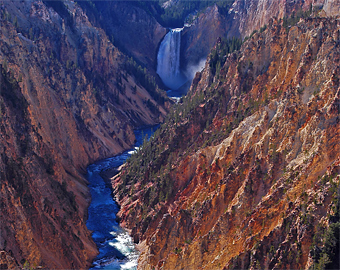Incorporating Conservation Needs of At-risk Plants
From the Colorado Natural Heritage Program
Colorado Wildlife Action Plan: Proposed Rare Plant Addendum
From the Michigan Natural Features Inventory
Assisting the Michigan Wildlife Action Plan: Relevant Information and Tools for Incorporating Plants
From the Montana Natural Heritage Program
Montana report
From the New Jersey Natural Heritage Program
Integrating the Conservation of Plant Species of Concern in the New Jersey State Wildlife Action Plan
Vulnerability of 70 Plant Species of Greatest Conservation Need to Climate Change in New Jersey
Integrated Management Guidelines for Four Habitats and Associated...Species of Greatest Conservation Need in the Skylands and Pinelands Landscape Conservation Zones...
From the North Dakota Natural Heritage Program
North Dakota Comprehensive Wildlife Strategy: Proposed Plant Species of Conservation Priority Addendum
- Search the NatureServe Climate Change Vulnerability Assessments for Species
Developing Consistent Habitat Mapping for Conservation Focal Areas
- Final Report: Northeastern and Upper Midwestern Terrestrial Habitat Classification and Habitat Map
- Data download: Midwestern (US FWS Region 3) Update of Terrestrial Ecological Systems of the United States
- Data download: Complete Terrestrial Ecological Systems of the United States
- View Terrestrial Ecological Systems on LandScope America map viewer
Viewable as the default “fine-scale” Ecosystems layer at 1:577,791 scale and smaller; use map viewer's "Identify" tool to access - detailed descriptions of Terrestrial Ecological Systems on NatureServe Explorer
- brief descriptions of Terrestrial Ecological Systems on LandScope America
Integrating Connectivity for Wildlife Corridors
- ConnectingLandscapes.org: A Practitioner's Resource for Assessing and Planning for Habitat Connectivity
via LandScope America - Western Govenors' Crucial Habitat Assessment Tools (CHAT)
 Planning for natural resources conservation and management is a critical responsibility of state and federal agencies, NGOs, land trusts, and many private organizations. To meet land and natural-resource management goals, these organizations need knowledge on key species and habitats, including comprehensive maps of natural resources, species imperilment status and vulnerability, and areas important to wildlife connectivity.
Planning for natural resources conservation and management is a critical responsibility of state and federal agencies, NGOs, land trusts, and many private organizations. To meet land and natural-resource management goals, these organizations need knowledge on key species and habitats, including comprehensive maps of natural resources, species imperilment status and vulnerability, and areas important to wildlife connectivity.
NatureServe developed a suite of materials that planners, managers, and landowners can apply in large-scale land planning and management.